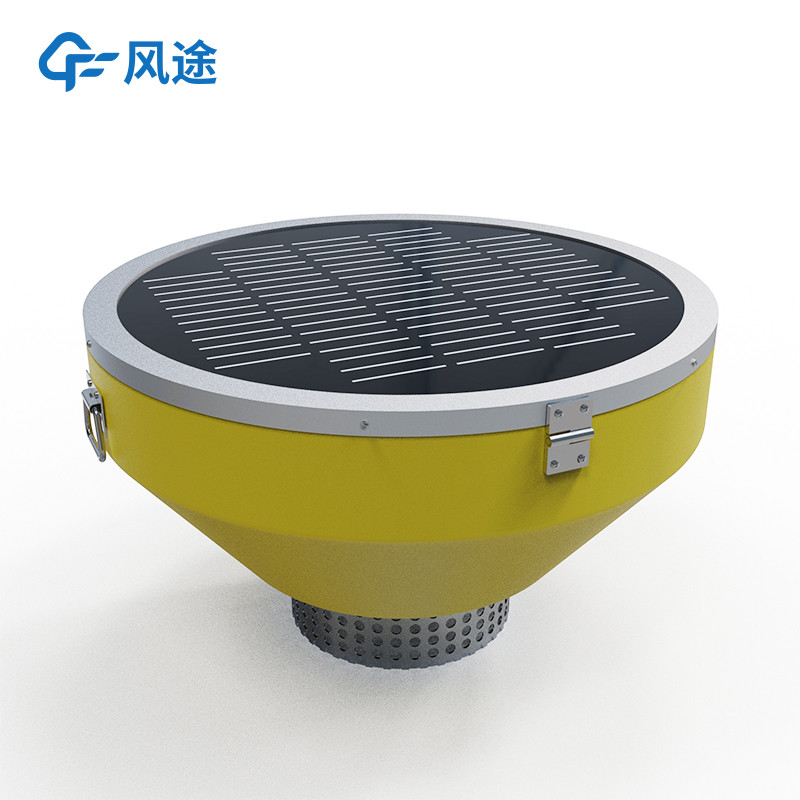Tianyi Sensor IOT Technology Co., Ltd
Sales Manager:Ms. Emily Wang
Cel,Whatsapp,Wechat:+86 15898932201
Email:info@fengtutec.com
Add:No. 155 Optoelectronic Industry Accelerator, Gaoxin District, Weifang, Shandong, China

Sales Manager:Ms. Emily Wang
Cel,Whatsapp,Wechat:+86 15898932201
Email:info@fengtutec.com
Add:No. 155 Optoelectronic Industry Accelerator, Gaoxin District, Weifang, Shandong, China
time:2025-09-01 08:47:48 source:Weather Station viewed:149 time
The buoy-type online water quality monitoring system is a modern water body monitoring method. As an automated device for long-term and real-time monitoring of water quality, it is widely used in environmental monitoring of various water areas such as rivers, lakes, oceans, reservoirs, and aquaculture. Its core function is to continuously collect water quality-related data, providing a scientific basis for water environment management, pollution early warning, and ecological protection. It enables real-time observation of cloud data, facilitating staff to remotely access and view monitoring information.
The system mainly consists of three parts: the buoy body, the solar power supply system, and the monitoring system. The overall assembly process is simple and convenient. It only requires integrating sensors for various parameters onto the buoy and deploying it in the designated monitoring water area to operate normally, without complex on-site installation procedures, which greatly reduces the difficulty of deployment. Among them, the buoy body is made of corrosion-resistant and anti-aging polymer materials to ensure the stable floating of the device on the water surface and the safety of internal components; the solar power supply system adopts a mode of solar panels combined with storage batteries to provide power support for the long-term stable outdoor operation of the entire system, eliminating the need for frequent manual power supply; the monitoring system is the core functional module, including data collection, sensor monitoring, and other links.
The monitoring system of the system can be equipped with a variety of sensors, enabling real-time monitoring of multiple parameters of the corresponding water area. These parameters include not only the five conventional water quality parameters of pH, conductivity, turbidity, dissolved oxygen, and water temperature, but also special parameters such as ammonia nitrogen, nitrate nitrogen, total nitrogen, residual chlorine, COD (Chemical Oxygen Demand), suspended solids, ORP (Oxidation-Reduction Potential), chlorophyll, cyanobacteria, and various ions. Additionally, sensor types can be flexibly expanded to cover more monitoring indicators according to actual monitoring needs.
During operation, the sensors in the monitoring system directly contact the water body to collect real-time signals of the corresponding water quality parameters. These signals are converted into digital signals by the data collection module and then uploaded to the remote monitoring platform in real time through transmission methods such as 4G and 5G, thereby realizing real-time observation of cloud data. The system features continuous monitoring, unattended operation, and real-time data transmission, which can effectively avoid problems such as long time intervals and insufficient data representativeness existing in manual sampling and monitoring. Through the accumulation and analysis of long-term monitoring data, the changing laws of water quality in the water area can be accurately grasped. When abnormal fluctuations occur in water quality parameters, the monitoring platform can issue early warnings in a timely manner, helping relevant departments quickly take pollution prevention and control measures, which is of great significance for maintaining the health of the water environment.

To achieve efficient crop production in greenhouses, it is essential to precisely control key environmental factors:Temperature: Different crops have specific optimal temperature ranges. Excessively high or low temperatures can hinder their growth.Air humidity: Too high air humidity easily triggers...
Here's a little bit of knowledge: Bridges actually freeze more easily than road surfaces.Why is that?From the perspective of heat dissipation, the temperature difference between a bridge deck and an ordinary road surface is quite understandable. The road surface is directly built on the ground,...
A Negative Oxygen Ion Monitoring Station is a professional set of equipment used to monitor the number of negative oxygen ions in the air in real-time. It records the activity status of negative oxygen ions in the air through specific sensors, then converts these statuses into readable values via a...
In the process of coal mine production, wind measurement work is of great importance. The space underground in coal mines is relatively enclosed, and there are flammable and explosive substances such as gas and coal dust. Reasonable ventilation can effectively dilute and discharge gas, reduce the ga...